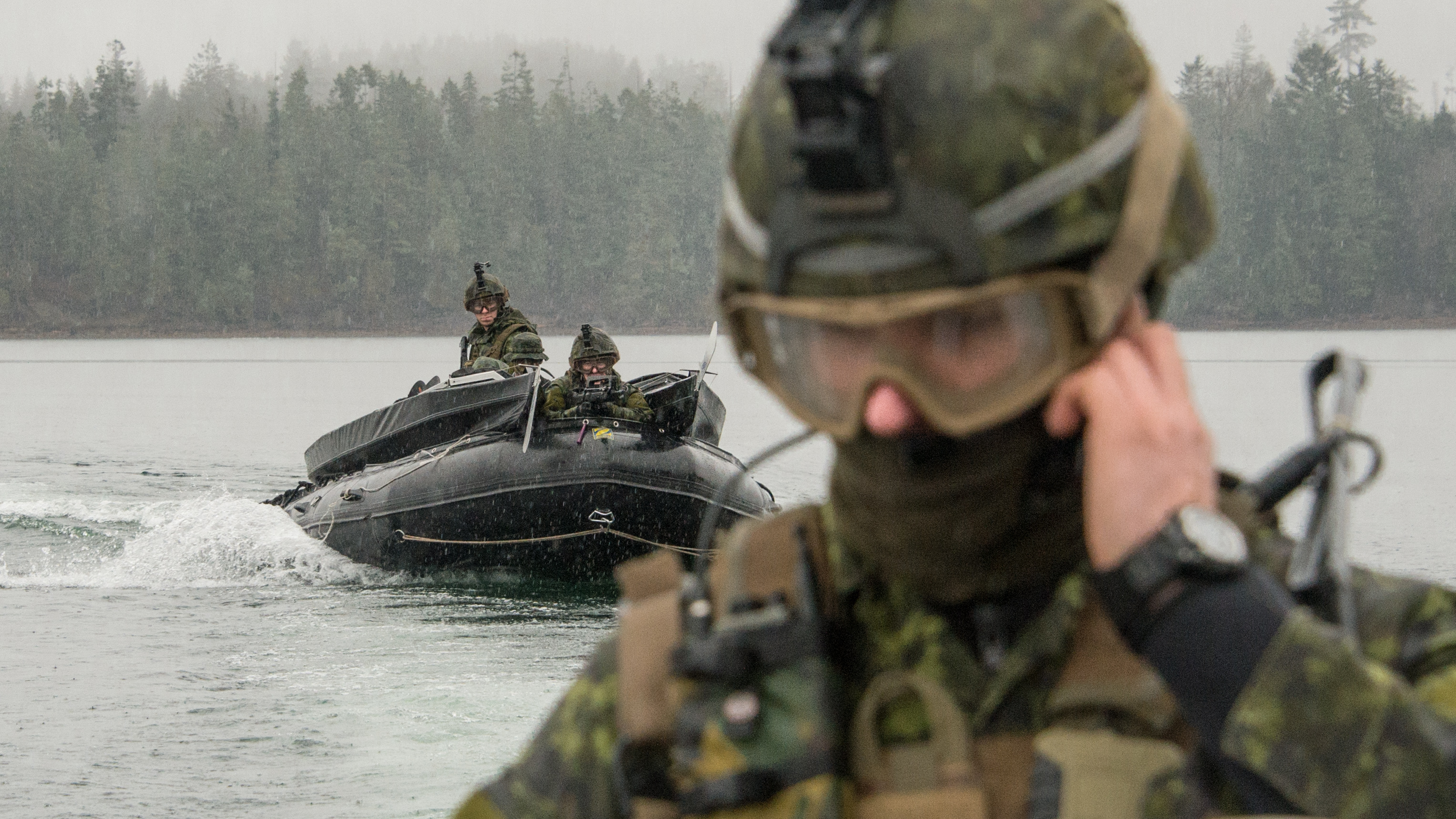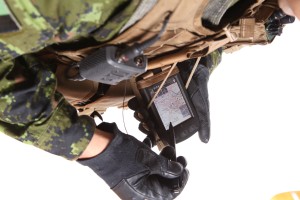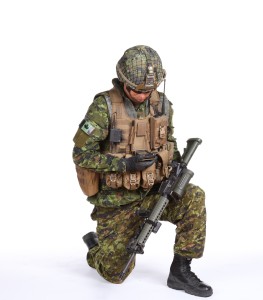When the idea of the soldier of the future is discussed, the typical image that comes to mind is a warrior suited up in sensor-laden body armour, a helmet with heads-up display visor, and probably an exoskeleton system for good measure.
However, a more accurate picture of the soldier of tomorrow is far from a cross between Iron Man and the Storm Troopers in Star Wars. The regular Canadian army soldier of tomorrow will go into battle equipped with high-tech communication and navigation systems that will not be unfamiliar to the corporate warriors from Toronto’s Bay Street.
In fact they will be accessing and transmitting battlefield information on an interface device wellknown to everyone. You might say it looks like a smartphone.
The Force Employment Concept for Canada’s army of tomorrow calls for military technology to assist small dispersed teams in gathering “situation awareness” that will provide land commanders the information
they need to make operational and strategic decisions and at the same time empower the small teams to make rapid decisions to achieve the commander’s desired outcome.
Last year, the Canadian government awarded the Saint-Jean-sur-Richelieubased electronics and weapons systems maker Rheinmetall Canada an initial contract worth $7 million for the Integrated Soldier System Project.
The ISSP is a suite of military equipment that soldiers wear as part of their combat load. The suite includes weapon accessories as well as electronics that enable soldiers to stay connected with teams when they are in the battlefield.
Hear from military personnel what Canada is looking to invest in to better support and enhance its C4ISR systems. Click on the logo below
The system is comprised of a radio, a communication headset and a “smartphone-like” computer that runs GPS and battle management applications.
“The nature of warfare has evolved due to asymmetric threats,” says Alain Tremblay, CEO and vice-president of Rheinmetall Canada. “Now more than ever, knowledge is power – it is seen by every armed force in the world as a weapon.”
This means, according to Tremblay, that in the age of the Internet of Things “the soldier himself will become a sensor, collecting data from the battlefield and relaying it to land commanders in real-time.” Before working for Rheinmetall, Tremblay served in the Canadian army for 33 years. He became commander of the land forces in Quebec and retired as a brigadier general.
Rheinmetall is working with Saab AB of Sweden on the ISSP. As the prime contractor, Rheinmetall is responsible for system development and integration, program management, and integrated logistics. Rheinmetall expects to finalize the qualification period for the ISSP this spring.
Upon successful qualification and system acceptance for production, Rheinmetall will deliver 1,632 units this year. Once the government declares the system fully acceptable, it may exercise options under the contract to purchase up to 4,144 more units, and award a second contract for related support.
The total value of both contracts could reach $250 million, according to the armed forces.
The system is based on a Linux operating system because the Army wanted a system that had an open architecture so that it could be expanded to run additional applications in the future.
Aside from allowing the soldier to communicate by voice, the system also enables the transmission of data. It will enable soldiers to indicate targets to ground commanders, as well as determine the location of friendly troops and vehicles on the ground to synchronize activity and avoid friendly fire.
The system is compatible with a HUD unit but at this stage of the program such a setup was not required, according to Tremblay.
“The intent was not to add too much weight to what the regular infantry soldier is currently carrying,” he explains.
Infantry soldiers generally carry around 35 to 40 kilos of gear. A portable transceiver would add around another 6.2 kilos to that. The suite developed by Rheinmetall weighs only 4 kilos.
Tremblay also says that it was important not to burden troops with the difficulty of training on unfamiliar technology. Hence the use of a smartphone-like device with command gestures akin to those required to operate typical mobile devices.
Still, Canada is in the “forefront” when it comes to ISS deployment for regular troops.
“As far as I know, Canada is only the third country to order such a system for its regular troops. Other forces may have similar systems but provide them for their special forces systems, ” according to Tremblay.
France has a similar system for its army and Rheinmetall worked on an expanded integrated system for the modular Future Soldier of the German Bundeswehr.
So-called tactical wearable systems can operate on the hardened networks or mobile ad hoc networks (MANETs), which the Defence Research and Development Canada (DRDC) is working on. MANETs are in fact a part of the larger ISSP.
The MANETs, which are being developed with the help of researchers from Carlton University, are essentially peer-to-peer Internet networks that connect mobile devices. They are self-forming and self-healing and don’t rely on centralize resources of fixed infrastructures such as cellular towers.
In the battlefield, for instance, each infantry soldier wearing mobile devices connected to the network would act as a connection or node to the network. As soldiers move about, their devices adapt and enable data to hop from one device to the next. The setup avoids the problem of degradation of signals due to obstacles such as buildings. Should one or more connected devices fail or lose reception, the remaining devices can adapt and continue to communicate.
Read more from the Feb-Mar 2016 Vanguard issue:
MANETs have no central security authority, so researchers are developing new security methods based on device behaviors and algorithms to analyze and authenticate a device’s radio signal.
Rheinmetall was also awarded the contract to provide the armed forces with a Medium Range Radar (MRR) system.
The MMR system will enable the armed forces to determine the launch and impact points of enemy rockets, artillery and mortar rounds. The system can track hostile and friendly aircraft, as well as unmanned air vehicles, cruise missiles and anti-radiation missiles.
Tremblay envisions the interaction of the MRR with the Integrated Soldier System enabling troops on the ground to recognize if enemy rockets are on their way within 10 to 15 seconds of the signal being received.
“This is the new warfare,” he says. “Technology provides us with access to tremendous amounts of information, the challenge is how commanders can disseminate it to the troops on the ground and vice-versa.”





Comments are closed.